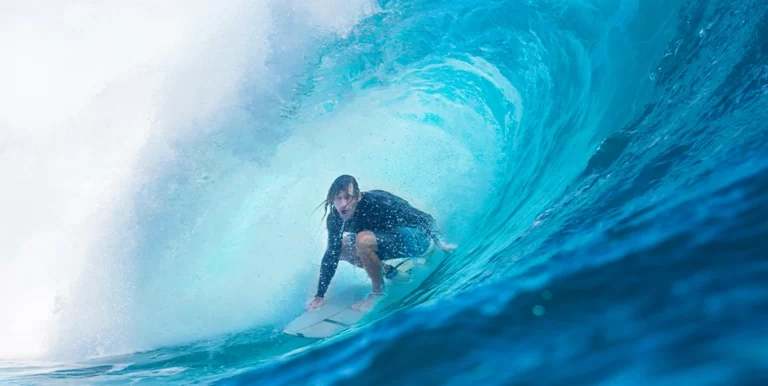Adventurous Play: 3 Types That Build Resilient, Happy Kids
Bringing back a ‘real’ childhood, risky play has made a resurgence here in Queensland. Councils have updated playground equipment with towering structures that involve quite a bit a strength and skill to climb. It’s great to see my boys pushing themselves to reach the top and carefully manoeuvre back down. I can see a sense of accomplishment in their faces.
Research shows that children are spending more time on screens and less in unscheduled free play outdoors, which limits opportunities for risk-taking and hinders personal growth1. Adventurous play is more than just fun; it’s an essential part of childhood development that shapes resilience, confidence, and creativity. I wanted to understand Adventurous Play on a deeper level so let me take you on a journey through the different types of adventurous play, why they matter, and how you can facilitate exciting exploration and adventure without letting things get out of hand.
What Is Adventurous Play?
Adventurous play refers to any type of play where children engage in activities that push their physical, mental, or emotional boundaries while encountering manageable risks. For example, it could include building and playing in a treehouse, swimming or playing in the surf at the beach, or navigating a tricky trail on a bike. It is characterised by exploration, problem-solving, and independence, helping children gain confidence, resilience, and creativity. Adventurous play encompasses activities that push children to explore the world beyond their comfort zones, engage their problem-solving skills, and foster independence. This type of play involves calculated risks that help children learn boundaries and build confidence.

Key components of adventurous play include:
- Physical challenges (e.g., climbing, balancing, jumping)
- Exploration of new environments
- Encounters with manageable uncertainty
According to Sandseter & Kennair, 2011; Gray, 2013: Children who engage in adventurous play, like climbing or exploring on their own, may reduce their risk of developing anxiety in the long term by naturally exposing themselves to manageable fears, similar to techniques used in exposure therapy.
The Types of Adventurous Play
Let’s explore the core categories of adventurous play and why they’re crucial for your child’s development.
1. Risky Play: Learning Through Calculated Risks

Risky play involves activities where children engage with controlled risks, such as climbing trees, navigating heights, or balancing on uneven surfaces. This form of play is vital for teaching kids how to assess danger and build self-confidence.
Examples of Risky Play:
- Play at heights (e.g., climbing structures or natural elements like trees and rocks)
- Play with speed (e.g., riding bikes or skateboarding)
- Play with dangerous tools (e.g., hammering or crafting with supervision)
- Play near elements like water or fire (e.g., supervised fire pits or creeks)
- Rough-and-tumble play (e.g., friendly wrestling or tumbling)
- Play where children can disappear (e.g., hide-and-seek in open spaces)
- Play with impact (e.g., jumping from heights onto soft surfaces)
- Vicarious risk (e.g., role-playing scenarios with excitement or suspense)
The Benefits:
- Boosts physical coordination: Kids develop strength and balance.
- Encourages decision-making: They learn to assess their abilities and make judgment calls.
- Builds emotional resilience: Learning to manage fear and mistakes prepares them for future challenges.
- Playing at great heights offers children a natural way to confront and desensitise their fear of heights. As Sandseter explains, this type of risky play fosters skill development and confidence, allowing kids to manage challenges and build resilience.2
Interesting Fact: “Human children’s play mirrors the type of play seen in animals; children also deliberately expose themselves to moderate levels of fear, for example, through play at heights or high speed.”3
2. Exploratory Play: The Joy of Discovery
Exploratory play is defined as play where children actively investigate their surroundings to learn and discover new things. It is all about satisfying curiosity by investigating the unknown. This can involve sensory play, engaging with nature, or experimenting with new tools and materials. Exploratory play is all about satisfying curiosity by investigating the unknown.
Examples of Exploratory Play:
- Beachcombing for shells and creatures.
- Creating sandcastles or mud structures.
- Exploring trails and streams for animals and plants.
The Benefits:
- Stimulates creativity and problem-solving: Exploratory play ignites the imagination as kids encounter new sights, textures, and objects.
- Encourages independence: Children take the lead in discovery.
- Nurtures a love for nature: Time spent outdoors has been linked to improved mental well-being.

Did you know?
If you’ve been struggling to pull your kids away from screens and into the great outdoors, I’ve got something that could change everything for you! Nature Play Australia has created incredible outdoor apps designed to spark a love for adventure, exploration, and hands-on learning in kids. These tools are perfect for families and schools who want to replace sedentary screen time with meaningful outdoor play. It’s not just about getting outside—it’s about igniting curiosity, building resilience, and creating unforgettable experiences.
3. Edge Play: Pushing the Boundaries
Edge play refers to the moments when children push their boundaries in a safe environment—be it physical, emotional, or mental. This type of play teaches children what it is like to be outside their comfort zone and how to gauge their limits and build a sense of mastery over their fears.

Key Examples of Edge Play:
- Surfing for the first time
- Trying new tricks on a bike or skateboard
- Speaking in front of peers or participating in group performances
The Benefits:
- Builds confidence: Overcoming perceived limits creates a strong sense of accomplishment.
- Fosters emotional intelligence: Kids learn to manage feelings of fear and excitement.
- Develops grit: The perseverance required to conquer an edge challenge translates into resilience in academic and social settings.
Stat spotlight: “Children who injured themselves falling from heights during middle childhood were subsequently less likely to report a fear of heights at age 18.”4
How to Support Adventurous Play Safely
Parents and caregivers play a pivotal role in fostering safe adventurous play without dampening the spirit of exploration.
Practical Tips:
- Create a safe environment: Inspect play areas for potential hazards without removing all elements of challenge.
- Let children take the lead: Resist the urge to intervene too quickly when they encounter obstacles.
- Model confidence: Encourage new experiences with positive reinforcement.
- Provide age-appropriate equipment: Safety gear like helmets, knee pads, and the right shoes are a must to prevent serious injuries and keep kids coming back for more fun.

Why Adventurous Play Matters More Than Ever
In an increasingly digital age, adventurous play helps balance screen time with meaningful real-world experiences. Studies show that kids who engage in outdoor play have stronger social skills, enhanced focus, and reduced anxiety levels. Gray (2013)5 writes that “Through this type of play, children learn how to solve their own problems, control their impulses and modulate their emotions.”
Additional Benefits:
- Reduced stress: Outdoor play reduces cortisol levels and enhances mood.
- Improved socialisation: Collaborative play builds communication and empathy.
- Increased creativity: Open-ended adventures fuel imaginative thinking.
Inspiring Ideas for Adventurous Play
If you’ve kids are anything like my boys they won’t need much help in engaging in adventurous play, however if you need some inspiration, here are a few activity ideas that align with the core types of adventurous play:

- Bushwalk Bingo: Create a scavenger hunt for natural treasures like gum nuts, koalas, or unique leaves.
- Beach Obstacle Course: Set up challenges using natural elements like driftwood, sandbanks, and tidal pools.
- Tree Climbing Adventure: Pick a safe tree for supervised climbing challenges.
- Mountain Biking Trails: Introduce age-appropriate bike trails for an exhilarating ride.
- Adventure Story Time: Read outdoor-themed books, such as Bazza Braves the Waves, to inspire outdoor exploration.
- Hiking and Picnic Excursions: Organise family-friendly hikes and Picnics to explore local parks or reserves.
Final Thoughts: Embracing the Power of Play
Adventurous play isn’t just about thrills; it’s a fundamental way for children to grow into resilient, confident, and creative individuals. By encouraging activities that challenge their physical, emotional, and mental boundaries, we help them build lifelong skills that go far beyond the playground.
Whether it’s surfing a wave, climbing a tree, or embarking on a bushwalk, each adventure fuels their sense of wonder and strengthens their sense of self. Remember: the best memories are often made when we step outside of our comfort zones and embrace the joy of exploration.
For more tips, ideas, and resources about adventurous play, follow the Bazza Blog and stay tuned for more detailed posts about risky play, edge play, and exploratory activities!
Sources Used In This Blog
- Brussoni, M., Olsen, L. L., Pike, I., & Sleet, D. A. (2012). Risky play and children’s safety: Balancing priorities for optimal child development. International Journal of Environmental Research and Public Health, 9(9), 3134–3148. https://doi.org/10.3390/ijerph9093134 ↩︎
- Sandseter, E. B. H. (2007). Categorizing risky play‑How can we identify risk‑taking in children’s play? Eur Early Child Educ J 15 (2): 237–252. ↩︎
- Sandseter, E. B. H. (2009). Risky play and risk management in Norwegian preschools—A qualitative observational study. Safety Science Monitor, 13(1), 2. ↩︎
- Poulton, R., Davies, S., Menzies, R. G., Langley, J. D., & Silva, P. A. (1998). Evidence for a non-associative model of the acquisition of a fear of heights. Behaviour Research and Therapy, 36(5), 537-544. ↩︎
- Gray P. (2013). Free to learn. New York: Basic Books. ↩︎






